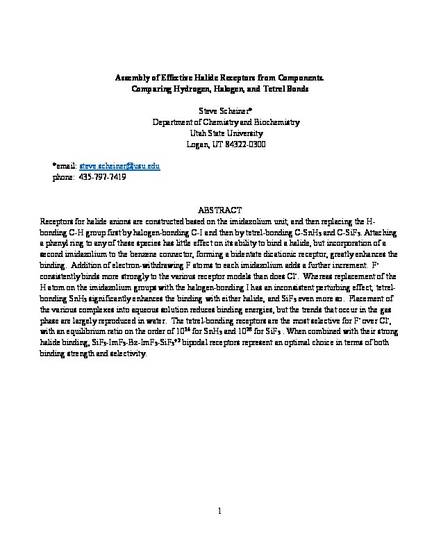
Receptors for halide anions are constructed based on the imidazolium unit, and then replacing the H-bonding C-H group firstby halogen-bonding C-I and then by tetrel-bonding C-SnH3 and C-SiF3.Attaching a phenyl ring to any of these species has little effect on its ability to bind a halide, but incorporation of a second imidazolium to the benzene connector, forming a bidentate dicationic receptor, greatly enhances the binding. Addition of electron-withdrawing F atoms to each imidazolium adds a further increment. F- consistently binds more strongly to the various receptor models than does Cl-. Whereas replacement of the H atom on the imidazolium groups with the halogen-bonding I has an inconsistent perturbing effect, tetrel-bonding SnH3 significantly enhances the binding with either halide, and SiF3 even more so. Placement of the various complexes into aqueous solution reduces binding energies, but the trends that occur in the gas phase are largely reproduced in water. The tetrel-bonding receptors are the most selective for F- over Cl-, with an equilibrium ratio on the order of 1014 for SnH3 and1028 for SiF3. When combined with their strong halide binding, SiF3-ImF3-Bz-ImF3-SiF3+2 bipodal receptors represent an optimal choice in terms of both binding strength and selectivity.

This document is the Accepted Manuscript version of a Published Work that appeared in final form in The Journal of Physical Chemistry A, copyright © American Chemical Society after peer review and technical editing by the publisher. To access the final edited and published work see https://doi.org/10.1021/acs.jpca.7b02305.